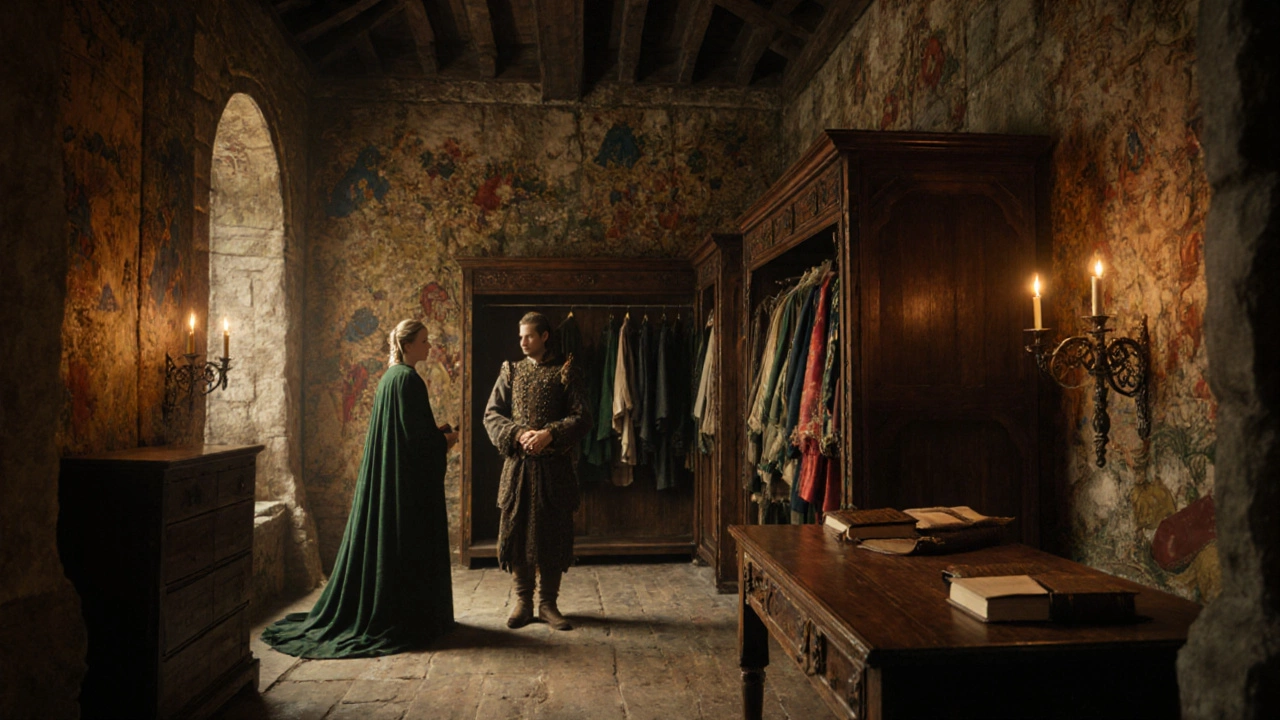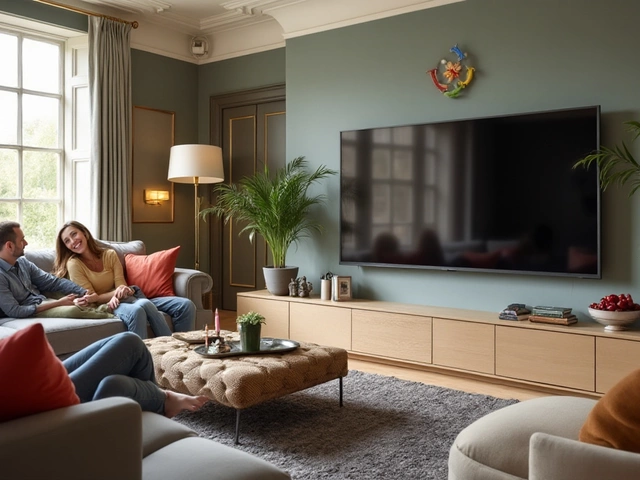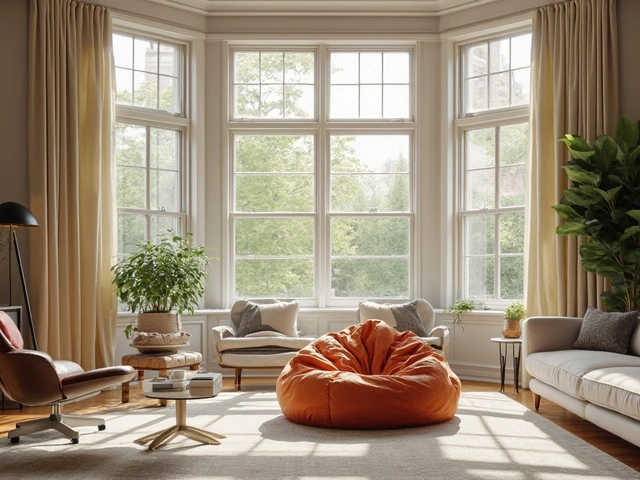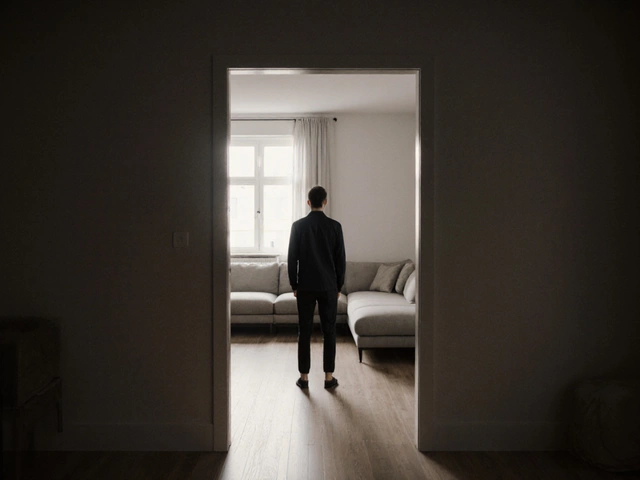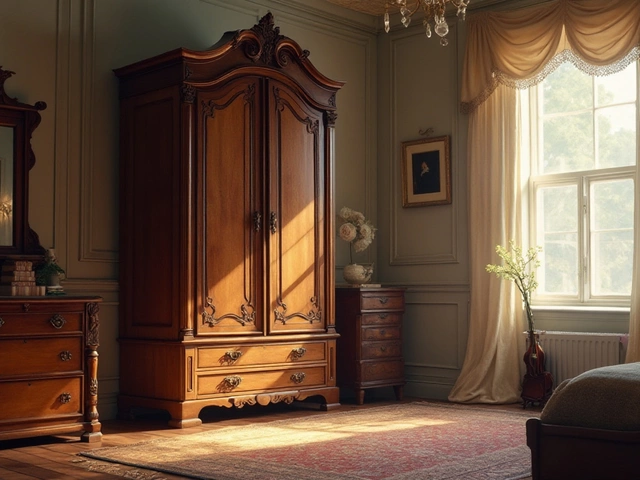Wardrobe vs. Closet Comparison Tool
Your Needs Assessment
Select features you care about most:
Historical Context
The word "wardrobe" comes from Middle English words: "warder" (to keep/guard) + "robe" (long garment). Originally, it referred to a room where royal clothes were stored and protected!
From the article: "The term 'wardrobe' was used in legal documents to refer to the physical room where these items were kept. You didn't 'open your wardrobe' — you went to the wardrobe room."
In medieval times, wardrobes were rooms managed by a "keeper of the wardrobe" — often a trusted official. By the 1800s, the furniture version became common in middle-class homes.
Select features above and click "Get My Recommendation" to see your best option.
Ever stood in front of your wardrobe and wondered why it’s called that? It’s not a door that wards off anything, and it doesn’t robe you. So where did the name come from? The answer isn’t obvious, but it’s rooted in centuries of language, fashion, and how people kept their clothes before closets were common.
The Word ‘Wardrobe’ Comes from Two Old Words
The word ‘wardrobe’ isn’t modern. It comes from Middle English, around the 1300s, and was formed by combining two words: warder and robe.
Warder meant ‘to keep’ or ‘to guard’ - think of it like a keeper or protector. It’s related to the Old French word warder, which meant to watch over or safeguard. This same root shows up in words like ‘warden’ and ‘guard’.
Robe meant a long garment - not just fancy ones, but any kind of outer clothing worn by men and women in medieval times. Back then, robes were the main type of clothing for most people, especially the wealthy. They were expensive, made from wool, silk, or linen, and needed careful storage.
Put them together - ‘warder’ + ‘robe’ - and you get ‘wardrobe’: a place to keep and protect your robes. It wasn’t a piece of furniture at first. It was a room.
Wardrobes Were Rooms, Not Furniture
In medieval castles and manor houses, the ‘wardrobe’ was a separate chamber - often near the owner’s bedroom - where clothes, jewels, and sometimes even important documents were stored. It wasn’t just a closet. It was a storage room managed by a person called the keeper of the wardrobe, who was often a trusted official.
In England, the Royal Wardrobe was a major department of the royal household. It didn’t just hold clothes - it handled payments, bought fabrics, commissioned tailors, and kept track of the king’s entire wardrobe inventory. In some cases, it even functioned like a treasury, storing valuable items like gold thread, fur trim, and ceremonial armor.
By the 15th century, the term was used in legal documents to refer to the physical room where these items were kept. You didn’t ‘open your wardrobe’ - you went to the wardrobe room.
When Did the Wardrobe Become a Piece of Furniture?
The shift from room to furniture happened slowly, starting in the 17th century as homes became smaller and more practical. Wealthy households began replacing large wardrobe rooms with freestanding wooden cabinets - tall, with doors, shelves, and hanging rods.
These early furniture wardrobes were often made of oak or walnut, sometimes with intricate carvings. They had drawers for folded clothes and hooks or rods for gowns and coats. The design was practical: you could open the doors and access everything without leaving your bedroom.
By the 1800s, the furniture version had become standard in middle-class homes. The word ‘wardrobe’ stuck, even though its meaning had changed. The room was gone, but the name remained.

Why Didn’t It Become a ‘Closet’?
You might wonder why we didn’t just start calling them ‘closets.’ The word ‘closet’ comes from the Latin clausum, meaning ‘closed place.’ It was used for small private rooms - sometimes for prayer, sometimes for storage. In England, a closet was often a tiny room, not meant for hanging clothes.
But ‘wardrobe’ had already been tied to clothing storage for centuries. It carried the idea of protection, care, and value. Clothes weren’t just fabric - they were status symbols. A wardrobe held your identity. Calling it a ‘closet’ felt too small, too humble.
Even today, in British English, ‘wardrobe’ is the default term. In American English, ‘closet’ is more common - but ‘wardrobe’ still pops up when people talk about freestanding units. That’s because ‘wardrobe’ carries a sense of permanence and quality. A closet is built-in. A wardrobe is something you buy.
Modern Wardrobes Still Carry the Old Meaning
Today’s wardrobes - whether built-in, walk-in, or freestanding - still do what their medieval ancestors did: protect, organize, and display your clothes. The materials have changed (MDF, laminates, glass), and the designs are sleeker, but the purpose hasn’t.
Think about it: when you hang your best coat, fold your winter sweaters, or sort your shoes inside a wardrobe, you’re still ‘warding’ them - keeping them safe from dust, moths, and clutter. You’re still ‘robing’ yourself - preparing for the day, the event, the moment.
The name didn’t just survive. It adapted. It went from a royal storage room to a piece of furniture you assemble yourself. But at its core, it’s still the same thing: a guardian of your clothes.

What’s the Difference Between a Wardrobe and a Closet?
People often use the terms interchangeably, but there’s a real difference - and it’s not just about size.
- A closet is built into the wall of a room. It’s part of the house’s structure. You don’t move it. It’s usually smaller and often lacks drawers or shelves.
- A wardrobe is a standalone piece of furniture. You can buy it, move it, or take it with you when you relocate. It often has more features: drawers, mirrors, shoe racks, lighting.
So if you’re shopping for storage, the term matters. If you want something permanent and hidden, go for a closet. If you want flexibility, style, and extra storage, a wardrobe is your pick.
Wardrobes Around the World
The word ‘wardrobe’ is used in English-speaking countries, but other cultures have their own versions - and their own names.
- In Germany, it’s Kleiderschrank - literally ‘clothes cabinet’.
- In France, it’s armoire, which originally meant a large chest or cupboard. The word ‘armoire’ is still used in English to describe ornate, antique wardrobes.
- In Japan, people use tsukue or hakodate - wooden cabinets with sliding doors, often used for kimono storage.
Even though the designs vary, the function is the same: protect your clothes, keep them tidy, and make getting dressed easier.
Why This Matters Today
Understanding where the word came from helps you see wardrobes differently. They’re not just storage. They’re heirlooms. They’re part of how we value our things. In a world of fast fashion, where clothes are cheap and disposable, the wardrobe reminds us that clothes used to be precious.
When you choose a wardrobe now, you’re not just buying furniture. You’re choosing how you want to care for your clothes - and by extension, how you want to care for yourself. A good wardrobe holds your identity, just like it did for kings and queens centuries ago.
Is a wardrobe the same as a closet?
No. A closet is built into the wall and usually has limited space. A wardrobe is a freestanding piece of furniture with more storage options like drawers, shelves, and mirrors. You can move a wardrobe; you can’t move a closet.
Why do some people call it an armoire?
‘Armoire’ is the French word for a large cupboard or wardrobe, especially one with decorative carvings. It’s often used in English to describe antique or ornate wardrobes. So while all armoires are wardrobes, not all wardrobes are armoires.
When did wardrobes become common in homes?
Wardrobes as furniture became common in middle-class homes during the 1800s. Before that, only the wealthy had them. In medieval times, wardrobes were rooms, not furniture.
Do all cultures use the word ‘wardrobe’?
No. Different cultures have their own terms - like Kleiderschrank in German or armoire in French. But the concept of storing clothes in a protected space is universal.
Why is the word ‘robe’ in ‘wardrobe’ if we don’t wear robes anymore?
The word ‘robe’ originally meant any long garment - not just ceremonial ones. In medieval times, most clothing was robe-like. Even today, we say ‘robe’ for bathrobes and gowns. The name stuck because it described the type of clothing stored inside.
